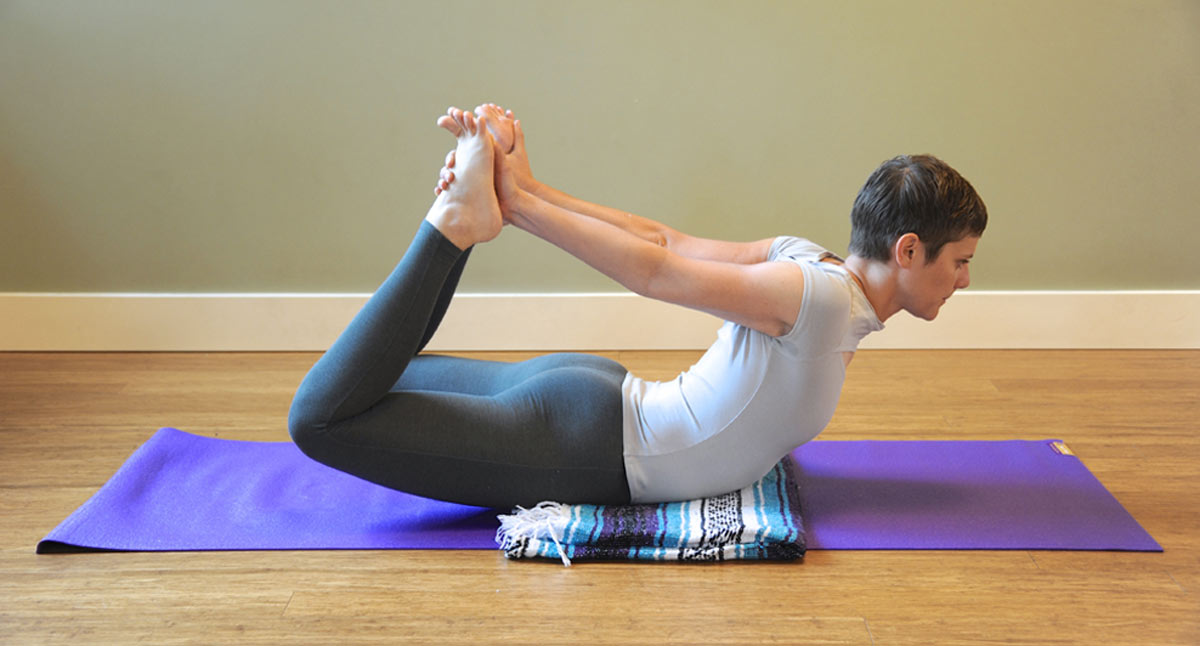
Have you ever felt as if you were stuck to the floor when you practice Bow Pose? You’re not alone. Dhanurasana may not look as complicated as, say, Urdhva Dhanurasana (Upward Bow Pose), but that doesn’t mean it’s easy.
You can make Dhanurasana more doable, though, with proper warmup and preparation. Breaking down the pose into its component parts can help you identify what you need to do in order to prepare. Here are the qualities that support practicing Dhanurasana:
- Quadriceps and hip flexor flexibility
- Shoulder and chest muscle flexibility
- Spinal strength and flexibility
- Abdominal flexibility
To this end, there are several poses that you might want to sprinkle into your pre-Dhanurasana routine. Below are some of my favorites.
Prep Poses for Dhanurasana
- Utkatasana (Fierce Pose): It helps to warm your muscles before you stretch them. Utkatasana is a great pose for warming up and challenging quad strength.
- Adho Mukha Svanasana (Downward Facing Dog Pose): Downward Facing Dog Pose is technically a forward bend, but it’s also a great pose for unwinding general muscle tension and mobilizing your joints. Move around a bit within the pose.
- Anjaneyasana (Lunge Pose): Practicing a few lunge poses—both high and low lunge—can help to loosen up your quads and hip flexors.
- Talasana (Palm Tree Pose): This pose helps warm up the thoracic spine and stretch the lateral abdominal muscles. It’s also a good shoulder stretch.
- Baby Backbends: Practice Salabhasana in all its variations to warm up and mobilize your spine.
- Ardha Supta Virasana (Reclining Half Hero Pose): This pose may or may not be accessible to everyone, but if it’s compatible with your knees (remember: there’s no good knee pain!), this pose can further stretch the quads and hip flexors. If this pose isn’t for you, you can, of course, skip it.
- Salamba Matsyasana (Supported Fish Pose): Supported Fish Pose stretches the chest and shoulder muscles. Spend 3 to 5 minutes or more in the pose.
Now you’re ready for Dhanurasana. Follow these instructions to practice the pose safely.
After practicing a few rounds of Dhanurasana, make sure to practice a few gentle twists to unwind tension in your back and calm your nervous system. Here are some suggestions:
- Twists: Jathara Parivrttanasana (Revolved Belly Pose), Parvrtta Sukhasana (Revolved Easy Pose)
- Forward bends: Janu Sirsasana (Head-of-the-Knee Pose), Upavista Konasana (Seated Angle Pose)
Don’t forget to give yourself a generous Savasana (Relaxation Pose).
